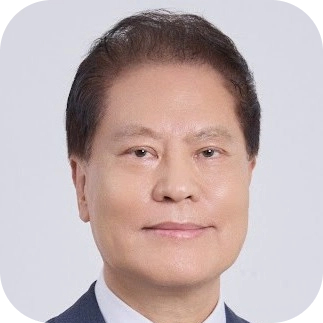icigp_contact@163.com +86-18000547208
icigp_contact@163.com +86-18000547208

Prof. Hanseok Ko (ISCA Fellow, IET Fellow)
The Catholic University of America, USA
Biography: Dr. Hanseok Ko is Newton-Bennett Endowed Chair Professor of Electrical and Computer Engineering (ECE) and Director of the Multimodal AI Laboratory at The Catholic University of America in Washington, D.C., USA. He previously held a professorship in the Department of ECE at Korea University, Seoul, where he also served as Department Chair and later as Vice President for the Office of Information Technology Services. Dr. Ko brings over two decades of experience in both academia and government research. He has also held visiting professor positions in the ECE Department at Johns Hopkins University and the University of Maryland Institute for Advanced Computer Studies (UMIACS), CS Department. Dr. Ko is widely recognized for his contributions to multimodal signal processing and AI-based human-machine interaction. He is credited as the principal developer of the core acoustics and speech interface system for Hyundai and Kia Motors. At Korea University, he served as Director of the Intelligent Signal Processing Lab, where his research focused on artificial intelligence and machine learning, multimodal signal processing (including acoustics, speech, and image), and interactive systems for robotics, consumer electronics, and healthcare. He has authored over 700 research papers and holds or has pending 83 patents across the U.S. and Korea. Dr. Ko’s leadership in the field includes serving as General Chair for IEEE ICASSP 2024 and INTERSPEECH 2022. He was a founding editor of the Journal of Communications and Networks (JCN), and has served as President of the Acoustical Society of Korea. He is a Fellow of the International Speech Communication Association and the Institution of Engineering and Technology. He is serving as a Distinguished Lecturer for the IEEE Signal Processing Society in 2025 and 2026.

Prof. Lizhuang Ma
Shanghai Jiao Tong University, China
Biography: Professor Ma is a
recipient of the National Science Fund for Distinguished
Young Scholars (1996) and was selected candidates for
the National "Hundred, Thousand, Ten-Thousand Talent
Project" (national level, 1997). His accolades include
the Shanghai Science and Technology Progress Grand Award
(First Completion Person), First and Second Prizes of
the Shanghai Science and Technology Progress Award, the
China Youth Science and Technology Award, the Second
Prize of the Ministry of Education Science and
Technology Progress Award, the First Prize of the Wu
Wenjun Artificial Intelligence Natural Science Award,
the First Prize of the CSIG Science and Technology
Progress Award, and the Special Allowance from the State
Council.
He has published over 580 papers in important domestic
and international academic journals, including a series
of top-tier publications in IEEE TPAMI, TIP, CVPR, etc.
He has created over 120 billion yuan in new economic
benefits.